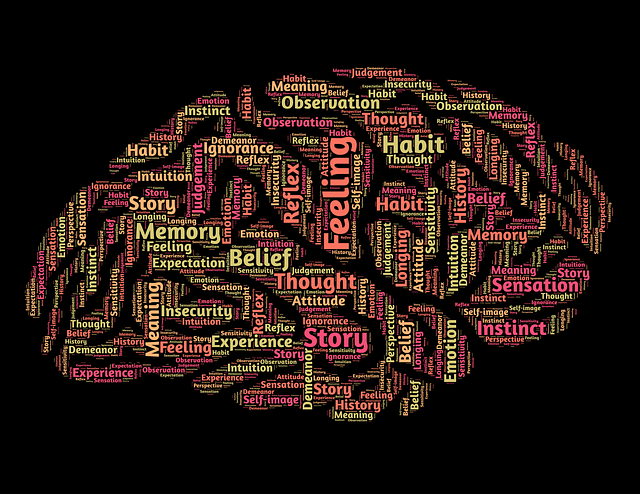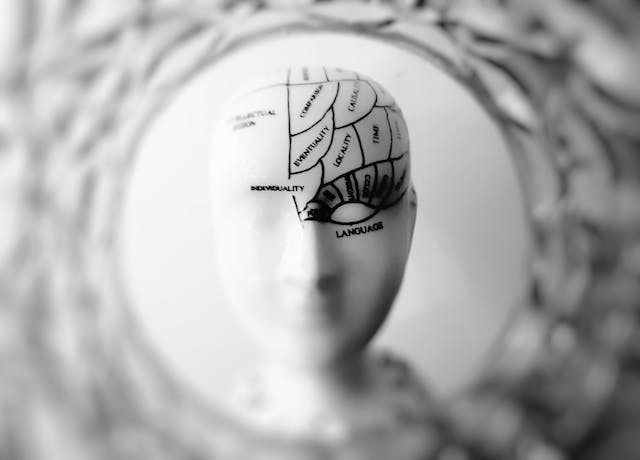Neuro-Linguistic Programming (NLP) is a powerful framework that explores the intricate connection between neurological processes, language patterns, and behavioral outcomes. At its core, NLP seeks to understand how individuals perceive the world and how these perceptions influence their thoughts and actions.
Neurological Foundations: The ‘Neuro’ in NLP refers to the mind and nervous system. NLP posits that our experiences are processed through our senses and translated into thought patterns. Understanding these neurological processes allows individuals to gain insights into their cognitive functioning.
Linguistic Influences: The ‘Linguistic’ component emphasizes the impact of language on our internal representations of experiences. Words have the power to shape our perceptions and influence behavior. NLP delves into linguistic patterns, exploring how language can be used to create positive change.
Behavioral Outcomes: Ultimately, NLP aims to influence behavioral outcomes by recognizing and modifying thought patterns. By understanding the connections between neurology, language, and behavior, individuals can reshape their responses to various situations and enhance personal and professional development.
Key Concepts in NLP:
- Representational Systems: Examining how individuals internally represent experiences through visual, auditory, kinesthetic, olfactory, and gustatory channels.
- Anchoring: Understanding how external stimuli can trigger specific emotional states or responses.
- Meta-Model: Identifying and challenging linguistic distortions, deletions, and generalizations to enhance communication.
This deep dive into the basics of NLP sets the foundation for further exploration into its techniques and applications, providing a roadmap for individuals seeking personal growth and effective communication.
The Mind-Body Connection: How NLP Shapes Our Perceptions
Neuro-Linguistic Programming (NLP) delves into the intricate relationship between the mind and body, exploring how neurological processes and linguistic patterns shape our perceptions of the world. This connection forms the foundational principles of NLP, influencing how we think, communicate, and behave.
Understanding Neurology in NLP: NLP recognizes the central role of neurology in processing our experiences. Our senses act as conduits for information, and NLP seeks to understand how the mind encodes and interprets these sensory inputs. By grasping the neurology behind our thoughts, emotions, and behaviors, individuals gain insights into the root of their responses.
Linguistics as a Shaper of Reality: The linguistic aspect of NLP acknowledges the power of language in constructing our internal representations. Words are not just tools for communication; they actively contribute to the creation of our reality. NLP explores how language can be a transformative force, influencing personal narratives and shaping the way we perceive the world.
Perception and Behavioral Outcomes: The mind-body connection established by NLP is pivotal in determining behavioral outcomes. By understanding how neurological processes and linguistic cues contribute to our perceptions, individuals can identify patterns and make intentional changes. NLP techniques empower individuals to reshape their thought processes, leading to more constructive behaviors and responses.
Practical Applications: NLP’s emphasis on the mind-body connection extends to practical applications in various fields. From enhancing communication skills to addressing limiting beliefs and fostering personal development, NLP provides tools to align neurology and linguistics for positive outcomes.
This exploration of the mind-body connection in NLP lays the groundwork for individuals to harness the power of their thoughts and language, fostering personal growth and effective communication.
Programming for Success: NLP Techniques and Strategies
Unlocking Success with NLP Techniques: Neuro-Linguistic Programming (NLP) offers a rich array of techniques designed to unlock personal and professional success. These strategies, rooted in understanding the mind’s inner workings, empower individuals to overcome challenges, enhance communication, and achieve their goals. Let’s delve into some key NLP techniques that serve as programming for success:
Anchoring: NLP employs anchoring to link specific stimuli to desired emotional states. By consciously associating positive emotions with particular triggers, individuals can activate these anchors to access motivation, confidence, or focus when needed.
Visualizations and Mental Rehearsals: Visualization is a powerful tool in NLP, enabling individuals to mentally rehearse success scenarios. By vividly imagining desired outcomes, individuals enhance their self-belief and create a positive mindset conducive to achievement.
Reframing: NLP encourages the practice of reframing, a technique that involves changing the way we perceive situations. By altering the meaning attached to an experience, individuals can transform challenges into opportunities and cultivate a resilient mindset.
Language Patterns: Linguistic strategies in NLP focus on using language consciously to influence thought processes. Techniques like using positive language, reframing negative statements, and employing presuppositions contribute to effective communication and persuasive influence.
NLP in Action: Practical Applications and Benefits: NLP’s practical applications extend across various domains, offering tangible benefits for personal and professional development:
Effective Communication: NLP equips individuals with communication skills that foster understanding and rapport. Techniques such as mirroring, matching, and pacing enhance interpersonal connections and promote effective dialogue.
Goal Setting and Achievement: Through goal-setting frameworks and visualization techniques, NLP provides a roadmap for setting and attaining objectives. Individuals can clarify their goals, overcome obstacles, and stay motivated throughout their journey.
Stress Reduction and Resilience: NLP techniques contribute to stress reduction by offering tools for managing thoughts and emotions. Strategies like timeline therapy and the swish pattern help individuals build resilience and navigate challenges with a positive mindset.
Personal Transformation: The core of NLP lies in facilitating personal transformation. By programming the mind for success through intentional language and thought patterns, individuals can break limiting beliefs, cultivate confidence, and unleash their full potential.
In essence, the programming for success provided by NLP techniques empowers individuals to take charge of their lives, enhance their capabilities, and achieve meaningful outcomes in alignment with their aspirations.”
The Power of Language: Unraveling Linguistic Patterns in NLP
Decoding Linguistic Mastery in NLP: In the realm of Neuro-Linguistic Programming (NLP), the power of language takes center stage as a transformative force. Understanding linguistic patterns and harnessing the nuances of communication are key aspects of NLP, unlocking the potential for personal and professional growth. Let’s delve into the intricacies of linguistic mastery within the NLP framework:
Precision in Expression: NLP places emphasis on using language with precision and clarity. Practitioners learn to express ideas, thoughts, and emotions with accuracy, eliminating ambiguity and fostering effective communication.
Language as a Mirror: NLP recognizes that language is a mirror reflecting our innermost thoughts and beliefs. By paying attention to linguistic cues, individuals can gain insights into their mindset and identify patterns that may be shaping their experiences.
Positive Linguistic Framing: The language used in NLP is intentionally positive and future-oriented. Practitioners learn to frame thoughts and expressions in a way that aligns with desired outcomes, cultivating an optimistic and empowering mental environment.
Meta-Model of Language: NLP employs the Meta-Model, a set of linguistic distinctions that allows individuals to uncover and challenge limiting beliefs. By exploring language patterns, practitioners can elicit more specific information, challenge assumptions, and broaden perspectives.
Words That Shape Worlds: Language in NLP:
Presuppositions: NLP operates on the principle of presuppositions, which are assumptions or beliefs embedded in language. These assumptions shape the way individuals perceive the world, and by becoming aware of them, practitioners can reshape their worldview.
Sensory Language: NLP encourages the use of sensory-rich language to evoke vivid mental imagery. By incorporating visual, auditory, and kinesthetic elements into communication, practitioners can enhance the impact of their messages and connect more deeply with others.
The Milton Model: Named after renowned hypnotherapist Milton Erickson, the Milton Model is a set of linguistic patterns designed to induce trance-like states and promote open-mindedness. Practitioners use these patterns to influence positively and create receptivity to suggestions.
Language as a Tool for Change: In NLP, language is viewed as a powerful tool for personal transformation. By mastering linguistic patterns, individuals can change their internal dialogue, overcome limiting beliefs, and create a narrative that aligns with their goals.
In essence, the power of language within the NLP framework goes beyond communication; it becomes a catalyst for reshaping thoughts, fostering positive beliefs, and ultimately transforming one’s reality.
Neuroscience meets Psychology: The Scientific Roots of NLP
Neuro-Linguistic Programming (NLP) stands at the intersection of neuroscience and psychology, drawing on the rich tapestry of these scientific domains to unravel the intricacies of human behavior and cognition. Let’s embark on a journey into the scientific roots of NLP, exploring the profound connection between neuroscience and psychology:
The Neurological Lens: NLP begins with a deep dive into neuroscience, understanding how the brain processes information and shapes our perceptions. Practitioners delve into the intricacies of neural pathways, exploring how thoughts, emotions, and behaviors are intricately woven into the fabric of our neurology.
Cognitive Sciences Unveiled: At its core, NLP is steeped in cognitive sciences, the branch of psychology that studies mental processes such as perception, memory, and problem-solving. By leveraging insights from cognitive psychology, NLP offers a framework for understanding and modifying cognitive patterns that influence behavior.
Neuroplasticity and Change: The concept of neuroplasticity, the brain’s ability to reorganize itself, is a cornerstone of NLP. Practitioners recognize that the brain is malleable, and through intentional interventions, individuals can reshape neural connections, fostering personal growth and transformation.
Modeling Human Excellence: NLP’s roots in psychology involve the modeling of human excellence. Drawing inspiration from exceptional individuals, practitioners identify patterns of thinking and behavior that contribute to success. This psychological modeling forms the basis for creating strategies that can be adopted for personal development.
Exploring the Brain: NLP’s Basis in Cognitive Sciences:
Perception and Reality: NLP acknowledges that our perception of reality is subjective and shaped by cognitive processes. By understanding how the brain filters information, practitioners gain insights into the ways individuals construct their unique realities.
Language and Thought Patterns: Cognitive sciences inform NLP’s exploration of language and thought patterns. Practitioners learn to identify and modify cognitive distortions, fostering more constructive thought processes and enhancing communication.
Emotional Intelligence: NLP integrates insights from emotional intelligence, a key component of cognitive sciences. Understanding emotions, their origins, and their impact on behavior enables practitioners to navigate interpersonal dynamics with heightened sensitivity and effectiveness.
Behavioral Change through Cognitive Restructuring: Cognitive restructuring, a fundamental aspect of cognitive-behavioral psychology, is woven into NLP techniques. By reshaping cognitive patterns, individuals can effect behavioral change, aligning actions with desired outcomes.


NLP Techniques for Personal Development and Self-Improvement
Embarking on a journey of personal development and self-improvement often involves harnessing the power of Neuro-Linguistic Programming (NLP). This section unveils a repertoire of NLP techniques designed to rewire the mind and catalyze positive change:
Anchoring Success: Anchoring is a powerful NLP technique that associates a specific stimulus with a particular emotional state. Practitioners learn to create anchors, triggering desired emotions at will. This technique proves invaluable for cultivating confidence, motivation, and resilience.
Visualizations for Goal Achievement: NLP incorporates guided visualizations as a tool for manifesting goals. By vividly imagining desired outcomes, individuals engage their subconscious mind, aligning beliefs and behaviors with their aspirations.
Language Reframing: Language holds immense power over perception. NLP teaches the art of reframing—transforming negative or limiting language into positive and empowering expressions. This technique facilitates a shift in perspective, fostering optimism and resilience.
Timeline Therapy: Exploring the concept of timelines, NLP practitioners use this technique to address past traumas, overcome limiting beliefs, and envision a compelling future. Timeline therapy enables individuals to reframe their life narrative, paving the way for personal growth.
Submodalities for Change: Submodalities involve the finer details of sensory experiences, such as the brightness or size of mental images. NLP leverages submodalities to restructure internal representations, allowing individuals to change the way they perceive memories or thoughts.
Meta-Model Questioning: The meta-model is a set of linguistic patterns used to uncover and challenge limiting beliefs. NLP practitioners employ meta-model questioning to explore the accuracy of language, facilitating clearer communication and dispelling cognitive distortions.
Parts Integration: Many individuals grapple with internal conflicts, where different aspects of the self seem to be at odds. NLP’s parts integration technique helps reconcile these internal conflicts, fostering inner harmony and a unified sense of purpose.
Swish Pattern for Behavior Modification: The swish pattern is an NLP technique designed to break unwanted habits or thought patterns. By creating a mental image of the undesired behavior and swiftly replacing it with a more positive image, individuals can reprogram their automatic responses.
Rewiring the Mind: Tools for Positive Change: In the realm of personal development, NLP offers a diverse toolkit for positive transformation. As individuals explore and integrate these techniques into their lives, they unlock the potential for lasting change and self-improvement.
Mastering the Art of Connection: Communication Strategies with NLP
In the intricate tapestry of human interaction, effective communication serves as the linchpin for building meaningful connections. This section delves into the realm of Neuro-Linguistic Programming (NLP) to unveil powerful strategies that enhance interpersonal skills and foster impactful communication:
Building Rapport with Mirroring and Matching: NLP emphasizes the importance of building rapport—a foundation for effective communication. Mirroring and matching techniques involve subtly mimicking the body language, gestures, and vocal qualities of the person you are communicating with. This fosters a sense of connection and facilitates smoother interactions.
Calibrating Non-Verbal Cues: Proficient communicators pay keen attention to non-verbal cues, such as facial expressions, posture, and tone of voice. NLP teaches the art of calibrating these cues to gain deeper insights into the emotions and intentions of others, fostering empathetic and authentic communication.
Presuppositions and Framing: NLP introduces the concept of presuppositions—assumptions that underlie effective communication. Practitioners learn to frame conversations positively by adopting presuppositions that encourage understanding, collaboration, and solution-oriented thinking.
Meta-Programs for Understanding Behavior: Meta-programs are mental filters that shape how individuals perceive and respond to the world. NLP explores these patterns to understand the inherent preferences and tendencies of communicators. Recognizing meta-programs enables more nuanced and tailored communication.
Language Patterns for Influence: NLP delves into the art of language, highlighting patterns that influence the subconscious mind. This includes the use of embedded commands, metaphors, and persuasive language structures. Understanding and employing these patterns can enhance the impact of communication.
The Milton Model: Hypnotic Language Patterns: Named after Milton H. Erickson, a renowned psychiatrist, the Milton Model involves the use of hypnotic language patterns to induce a trance-like state of heightened receptivity. Practitioners leverage these patterns to communicate persuasively and facilitate positive change.
Feedback Loops and Sensory Acuity: Effective communication involves constant feedback. NLP emphasizes the importance of sensory acuity—the ability to notice subtle changes in a person’s physiology or behavior. Utilizing feedback loops and sensory acuity enhances communication by allowing for real-time adjustments.
Negotiation and Conflict Resolution Strategies: NLP provides valuable tools for navigating negotiations and resolving conflicts. Techniques such as reframing, anchoring, and outcome specification empower individuals to approach challenging conversations with clarity and diplomacy.
Effective Communication Strategies Derived from NLP: As individuals explore the rich terrain of NLP-derived communication strategies, they equip themselves with the skills to build stronger connections, resolve conflicts, and positively influence those around them. The journey toward communication mastery unfolds, guided by the principles of Neuro-Linguistic Programming.
Navigating Industries with NLP: A Multifaceted Approach
Neuro-Linguistic Programming (NLP) transcends boundaries, making a significant impact across diverse industries. This section explores the real-world applications of NLP in business, therapy, and education, showcasing its versatility and transformative potential.
Business: Enhancing Leadership and Communication Skills: In the dynamic landscape of business, effective leadership and communication are paramount. NLP equips professionals with tools to enhance leadership qualities, build robust teams, and foster a positive corporate culture. From negotiation tactics to strategic planning, NLP empowers individuals to navigate the complexities of the business world.
Therapy: Facilitating Personal Growth and Healing: NLP has found profound applications in the realm of therapy, offering tools for personal development and emotional healing. Therapists leverage NLP techniques to address issues such as phobias, trauma, and limiting beliefs. The focus on language, perception, and behavioral patterns enables clients to overcome challenges and achieve transformative growth.
Education: Optimizing Learning and Teaching Strategies: In the educational landscape, NLP contributes to optimizing learning and teaching methodologies. Educators use NLP techniques to cater to diverse learning styles, improve communication with students, and create engaging classroom environments. By understanding the cognitive processes of individuals, NLP enhances the effectiveness of educational practices.
Healthcare: Supporting Wellness and Patient Care: NLP is making inroads into healthcare, supporting wellness initiatives and patient care. From improving doctor-patient communication to addressing psychological aspects of healing, NLP enhances the holistic approach to healthcare. Practitioners in the medical field utilize NLP to create empathetic connections and foster positive health outcomes.
Sales and Marketing: Influencing Consumer Behavior: The world of sales and marketing benefits from NLP’s insights into human behavior and decision-making processes. Professionals in this domain leverage NLP techniques to understand consumer motivations, craft compelling messages, and build rapport with clients. The result is more effective sales strategies and impactful marketing campaigns.
Sports: Enhancing Performance Mindset: Athletes and sports professionals embrace NLP to enhance their performance mindset. Techniques such as visualization, goal setting, and mental rehearsal contribute to improved focus, resilience, and overall mental well-being. NLP becomes a valuable tool for achieving peak performance in the competitive arena of sports.
Real-world Impact: NLP’s Dynamic Influence: As NLP permeates various industries, its dynamic influence becomes evident in the tangible outcomes achieved. From fostering a positive corporate culture to supporting individuals on their journey to well-being, NLP stands as a versatile and impactful force across the spectrum of human endeavors.
Unlocking Mental Wellness: NLP's Role in Mastering the Mind
This section delves into the profound impact of Neuro-Linguistic Programming (NLP) on mental health and well-being. NLP serves as a powerful tool for navigating emotions, fostering resilience, and promoting mental wellness.
Understanding the Mind-Body Connection: NLP recognizes the intricate connection between neurology and linguistics, acknowledging the profound influence of language and thought patterns on mental health. By understanding this mind-body connection, individuals can gain insights into their emotional well-being and develop strategies for positive change.
Cognitive Restructuring with NLP Techniques: NLP provides a toolkit for cognitive restructuring, enabling individuals to identify and modify limiting beliefs and thought patterns. Techniques such as reframing, anchoring, and visualizations empower individuals to transform negative thought processes, promoting a healthier mental outlook.
Emotional Intelligence Enhancement: NLP enhances emotional intelligence by offering tools to recognize, understand, and manage emotions effectively. Through techniques like mirroring and rapport building, individuals can develop stronger interpersonal relationships and navigate emotional landscapes with greater ease.
Stress Reduction and Relaxation Techniques: The fast-paced nature of modern life often leads to stress and anxiety. NLP equips individuals with stress reduction and relaxation techniques, fostering a sense of calm and well-being. Mindfulness practices, coupled with NLP, create a holistic approach to managing stress and promoting mental resilience.
Overcoming Phobias and Trauma: For those dealing with phobias or traumatic experiences, NLP offers effective tools for overcoming these challenges. Techniques such as the Fast Phobia Cure and TimeLine Therapy® assist individuals in processing and releasing the emotional impact of past experiences, paving the way for healing and growth.
Building Confidence and Self-Esteem: NLP empowers individuals to build confidence and enhance self-esteem. Through visualization, positive affirmations, and goal-setting, individuals can reshape their self-perception and develop a more positive and resilient mindset.
Embracing Mental Wellness with NLP: As individuals engage with NLP for mental health, they embark on a journey of self-discovery and empowerment. By mastering the mind and navigating emotions, NLP becomes a valuable ally in the pursuit of lasting mental wellness.
Books on NLP
Explore the vast literature available on NLP. Books authored by experts in the field provide in-depth insights into theory, techniques, and real-world applications. Building a personal library of NLP literature can serve as a valuable ongoing resource.


